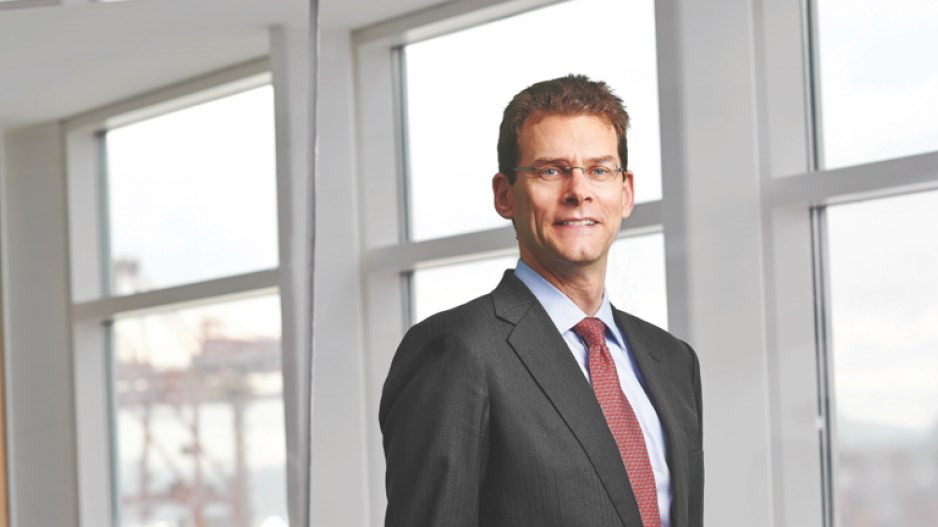In his annual address to local business leaders, the top executive at Vancouver Fraser Port Authority again took aim at the federal regulatory approval process for major projects as being too slow and inefficient.
VFPA president/CEO Robin Silvester was speaking to the Greater Vancouver Board of Trade when he broached the subject of the multi-billion Roberts Bank Terminal 2 container facility expansion– a controversial landfill project that is awaiting a final decision from Ottawa.
“We are cautiously optimistic that it’s finally time for a federal decision,” Silvester said. “To get a decision in the first quarter of next year, it would be less than a decade [between project proposal and approval], so we really need to change that.”
The RBT2 project has faced strong opposition ranging from local municipalities like Delta and Richmond, as well as from environmental groups and GCT Global Container Terminals – the operator of Roberts Bank’s existing Deltaport container terminal.
Silvester said that the Port of Vancouver’s “bad year” in 2021 – which saw wildfires and atmospheric river flooding knocking out rail transport to the port, as well as global supply chain bottlenecks – showed why expanding fundamental capacity quickly is crucial to Canada’s biggest port in fulfilling its mandate in facilitating trade.
“To be clear, environmental assessment needs to be undertaken properly,” he said. “We are totally committed that the environmental impact of port activity be properly integrated and fully mitigated… but it has to be possible to make a decision faster than 10 years.”
Since 2019, the VFPA’s application for RBT2 has been sent back by federal authorities to be reworked, causing a number of delays. A year–long review by a federally appointed panel that year returned in March 2020 with a report noting the project’s significant environmental impact, requiring the port authority to make adjustments.
When the VFPA responded to the need to re–work plans, the federal ministry of environment then requested “additional information” from VFPA on a number of other concerns in 2021. The final response in late 2021 led to Ottawa releasing a set of potential conditions for approval – although no commitment was made – through the Impact Assessment Agency of Canada.
Public comment on the new application and conditions ended this March, and all stakeholders have been waiting on a decision from the federal government since.
Silvester said the increased capacity isn’t just for keeping up with demand for more container trade capacity (which continues to be a topic of debate between the VFPA and opponents on whether such demand is growing to the point where a mega–project expansion is needed), but also for supply chain resiliency.
He cited examples where part of the supply chain bottlenecks seen in the last year actually stemmed from the lack of capacity in facilities in Eastern Canada – which dominoed into Vancouver and snarling cargo traffic movement. Larger capacity at the port itself – like what RBT2 would provide – would help resolve those issues, he said.
“In those 10 years, we’ve made other investments in various locations around the port, so it [faster decision making] can be done,” he reiterated. “We are a trading nation; if we run out of capacity in the next 5-7 years, we would become dependent on other routes, most likely in the U.S.”
Cargo traffic at the port fell 11% in the first half of this year to 68.3 tonnes, but officials attributed the loss almost completely on grain exports – which saw a poor harvest in fall 2021 and fell by 60% in terms of exports through Port of Vancouver in the first six months of 2022.




